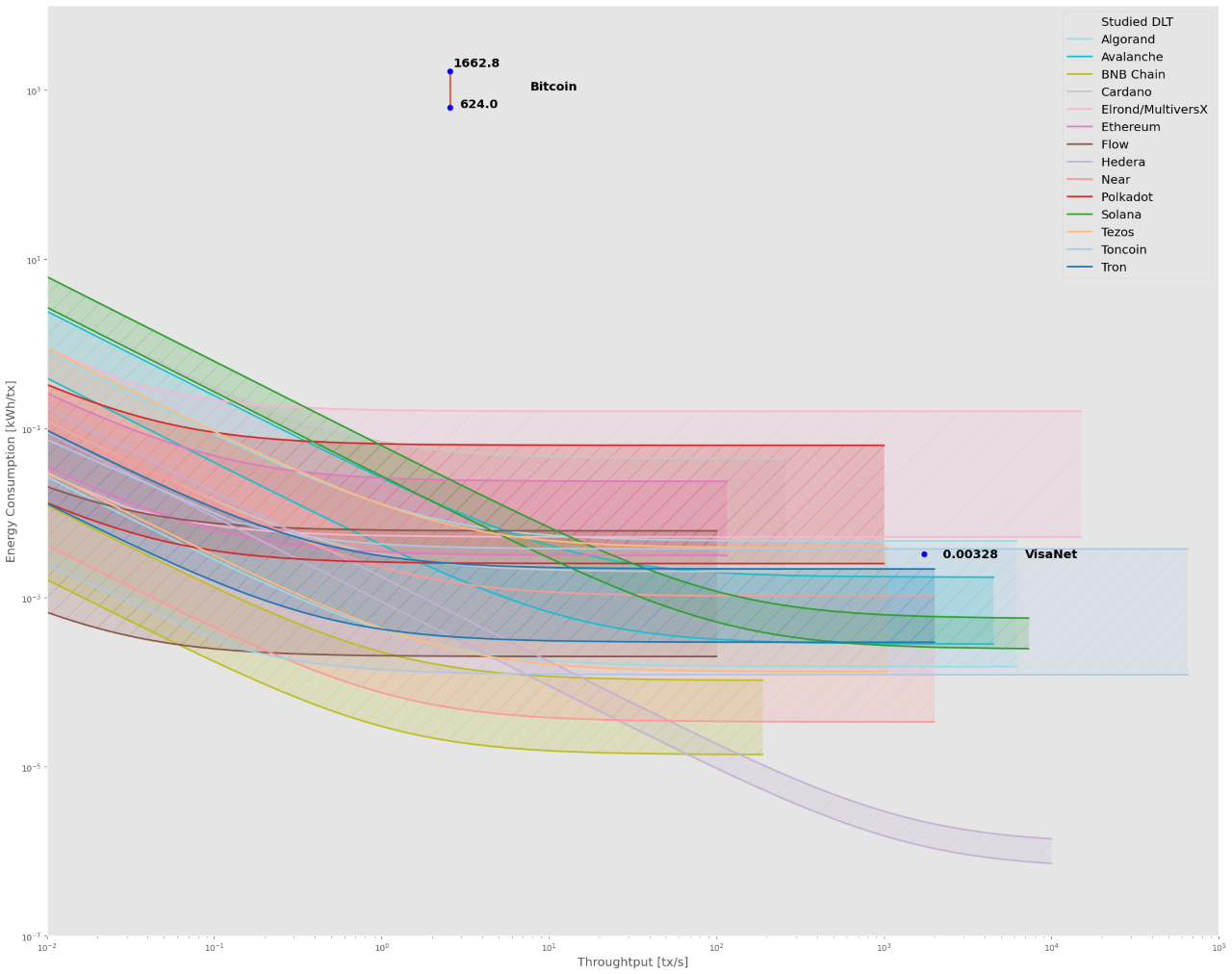REPORT
DLT Environmental Impact
What is the energy consumption of the leading PoS DLTs?
SHARE THE REPORT
REPORT
DLT Environmental Study
What is the energy consumption of the leading PoS DLTs?
SHARE THE REPORT
Researchers at UCL CBT release study on the environmental impact of PoS DLTs
The energy consumption of Algorand, Avalanche, Cardano, Ethereum, Hedera, Flow, MultirversX, NEAR, Polkadot, Tezos, Toncoin, Tron, and Solana has been studied.
Despite the increasing awareness of the potential environmental impact of Proof of Work blockchains, and the opportunity presented by Proof of Stake in this regard, the differences in the environmental impact of various PoS systems are not fully understood. A first paper, cited in the White House report “Climate and Energy Implications of Crypto-assets in the United States”, seeks to shed light on the energy consumption of some of the most important DLTs in the space. A second paper expanded and updated the previous work.
Researchers in affiliation with UCL CBT release study on the environmental impact of PoS DLTs
The energy consumption of Algorand, Avalanche, Cardano, Ethereum, Hedera, Flow, MultirversX, NEAR, Polkadot, Tezos, Toncoin, Tron, and Solana has been studied.
Despite the increasing opportunity for digitisation and looming disruption, currently, application areas and progress of DLT adoption in this area are not well understood. This report seeks to shed light on where DLT is being applied functionally in global physical supply chains and within certain sectors.
About the Report
Researchers at UCL’s Centre for Blockchain Technologies have released a pre-print looking at the environmental impact of Distributed Ledger Technology (DLT). This study fills a gap in the literature by developing a model to compare different configurations of Proof-of-Stake consensus mechanisms in various DLTs such as Algorand, Avalanche, Cardano, Ethereum, Hedera, Flow, MultirversX, NEAR, Polkadot, Tezos, Toncoin, Tron, and Solana.

What Proof of Stake means for the environment
It is already established that blockchains resorting to Proof of Work, due to the computational effort they require by design, entail a much larger energy footprint than Proof of Stake networks. However, the exact energy consumption characteristics of PoS-based systems and the difference between them are not widely understood. This study builds an energy consumption model and, by applying it, studies the environmental impact of fourteen important DLTs. The study furthermore compares their energy consumption with that of Bitcoin and VisaNet, and lays the ground for important future work in the discipline.
What Proof of Stake means for the environment
It is already established that blockchains resorting to Proof of Work, due to the computational effort they require by design, entail a much larger energy footprint than Proof of Stake networks. However, the exact energy consumption characteristics of PoS-based systems and the difference between them are not widely understood. This study builds an energy consumption model and, by applying it, studies the environmental impact of fourteen important DLTs. The study furthermore compares their energy consumption with that of Bitcoin and VisaNet, and lays the ground for important future work in the discipline.




